MikroTik CRS510-8XS-2XQ-IN Power Consumption and Noise
In terms of power consumption, the 60W PSUs are plenty. MikroTik rates the switch at 45W maximum and we saw just under that in our testing.
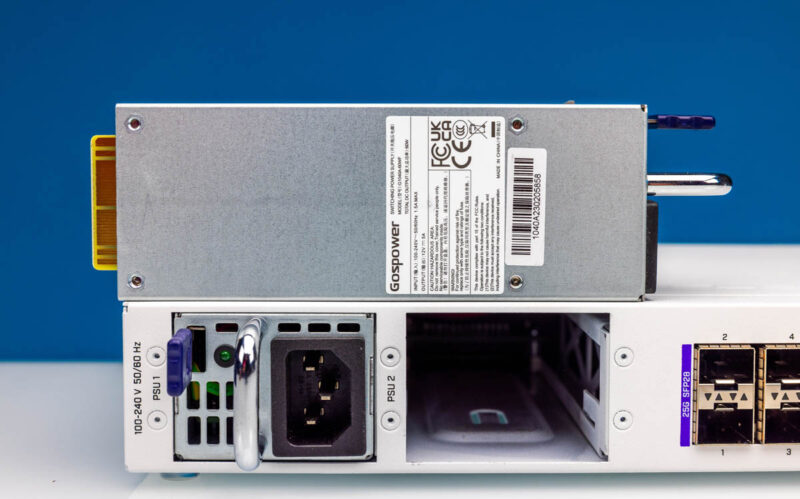
The breakdown is something like the switch uses ~15W at idle without any data cables. That was about 4W higher than we got on the CRS504 when we did that review. Adding 100GbE optical modules generally added ~4-5W each, so the switch used around 23-25W with 2 QSFP28 optics installed, but without traffic being passed. MikroTik’s maximum power consumption is 27W without attachments, but make no mistake, around half of the switch’s power consumption can end up being pluggable optics.
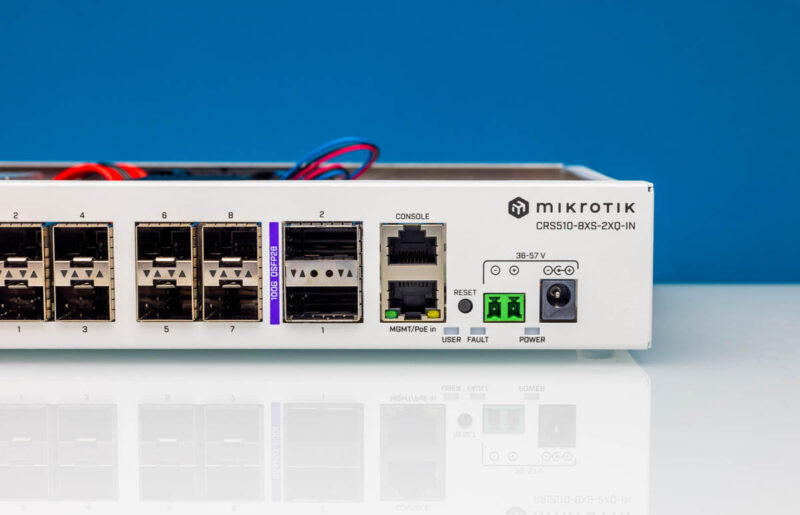
At idle, the switch was silent, but with two QSFP28 optics installed, the fans started to ramp within minutes, turning a silent switch in a 34dba studio into a 40dba switch without even populating the SFP28 ports. Side-by-side, the ramp would happen much more frequently and faster than the CRS504 with the same optics. Our best guess is that it was due to the larger heatsinks on the CRS504 optics.
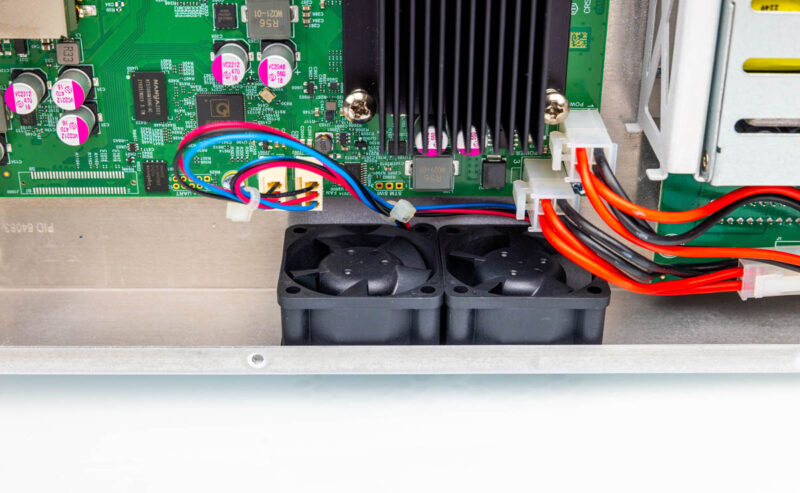
To us, making the switch a bit quieter might add a bit of cost, but that would make this an easy recommendation to put in even a quiet office.
Final Words
When we did the MikroTik CRS504-4XQ-IN review, it was momentous. That was a 400Gbps switch for around a $650 street price. Buying the switch and its four QSFP28 ports meant that many would be using breakout cables. The CRS510-8XS-2XQ-IN, however, changes that. Instead of having to use breakout cables, the SFP28 ports are exposed. If you want to have a DAC, SR optic, and LR optic installed, you can simply plug them into this model. That flexibility is great. Some will balk at a $175 street price premium for essentially the same switch, but $175 to make 25GbE pluggable choices easier will be worth it to many folks.
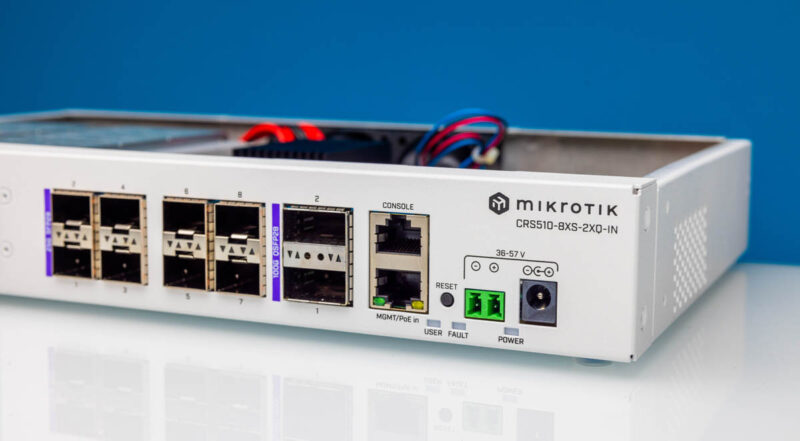
At the same time, it is much less expensive than the MikroTik CRS518-16XS-2XQ-RM, which has eight more 25GbE ports.
We just reviewed a new Supermicro A3SSV-16C-SPLN10F Intel Atom P5342 25GbE motherboard. 25GbE networking is already integrated into the Intel Atom parts. We also have a dual 200GbE NVIDIA card, which offers the same bandwidth as this entire switch. Many still think of 25GbE and 100GbE as distant options, but perhaps with the CRS510 and CRS504, they are more mainstream options.
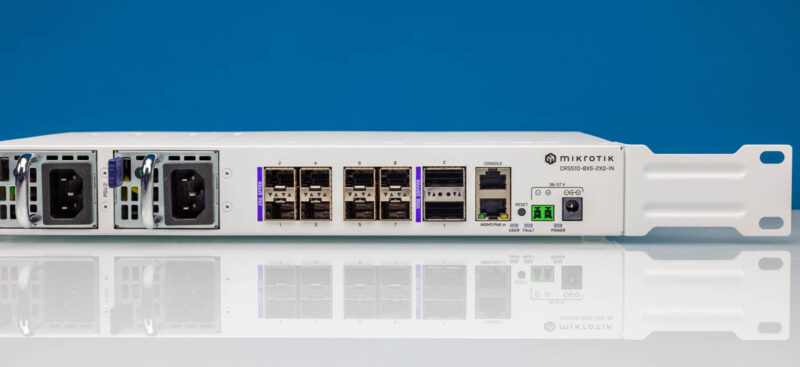
We now have a ton of MikroTik CRS504 switches and will likely add a few of these CRS510 switches at STH. It is convenient to be able to put a switch in locations where you simply have a few devices you need to connect at high speed. There are plenty of use cases and reasons to get larger 32-port 100GbE switches, but those switches cannot be powered off of 45W and PoE. The lower cost, power consumption, and noise of these switches are bringing a revolution of 25GbE and 100GbE to spaces that would not adopt it otherwise.
Where to Buy
We have purchased a bunch of these from Amazon. Here are affiliate links for which we may earn a small commission if you purchase through them (that is how we can buy these to review):
- MikroTik CRS510-8XS-2XQ-IN Amazon Affiliate link
- MikroTik CRS504-4XQ-IN Amazon Affiliate link

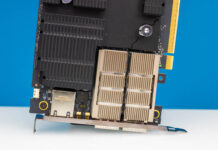
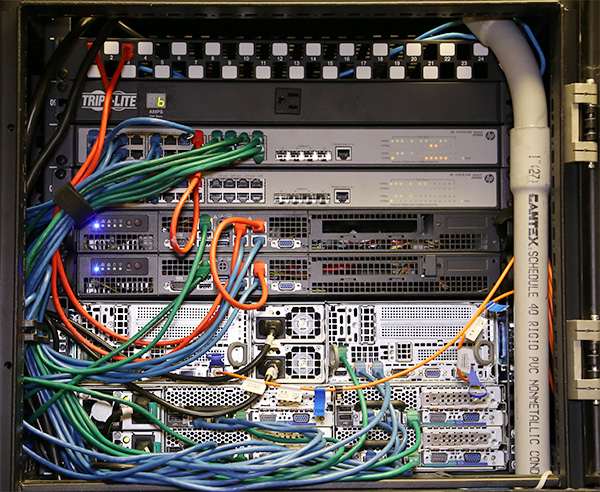
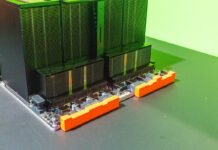
More of this. Leave the 2.5Gb stuff for the peasants.
This might be stated better considering that the tested unit has no such capable port:
“In terms of performance, we were able to get over 360-375Gbps easily (single direction) on average through each port using our new FPGA-based traffic generator.”
Finally! A switch review that’s not just filler.
One drawback of the 504 was that all ports on the breakout cable had to run at the same speed. So if you wanted to connect a 10G device, the other three ports on that cable would also drop back to 10G. Is that the same with this version, or can you connect a 10G and 25G device on the same group of four ports and have the 25G port still run at 25G?
I’m also happy to see something more relevant than the pointless 2.5G switches which are too slow for any decent amount of work.
Does this CRS510-8XS-2XQ-IN 100GB ports allow break out cable to 4x 25GB?